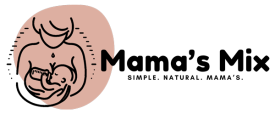Introduction:
Hey, Super Moms (and Dads)! Embarking on the journey of parenthood brings a whirlwind of joy, challenges, and a gazillion questions—top of the list? Ensuring our tiny humans get the right nutrition in their crucial first year. As a mom who’s been in the trenches, I’ve learned a thing or two about navigating the maze of baby nutrition. From deciphering hunger cues to introducing the first spoonful of solids, it’s a journey filled with milestones, surprises, and, yes, a fair share of spit-ups. But worry not! I’m here to share the scoop on how to meet your baby’s nutritional needs, ensuring they thrive and grow stronger every day. Ready to become a pro in baby nutrition? Let’s dive in!

The Liquid Gold: Breastmilk and Formula (0-6 Months)
In the first six months, your baby’s diet should be exclusively liquid. Breastmilk is often called ‘liquid gold’ for a good reason—it’s perfectly designed to meet your baby’s nutritional needs, packed with antibodies to fight off viruses and bacteria. However, I know breastfeeding isn’t possible or preferable for all moms, and that’s perfectly okay! Formula is a nutritious alternative, designed to mimic breastmilk’s nutritional profile closely. Whether you’re breastfeeding, formula feeding, or combining both, remember, you’re doing great!
Introducing Solids: The Adventure Begins (6-12 Months)
Around the six-month mark, your baby will start showing signs they’re ready for solids. This is a huge milestone! But it’s not just about filling their tummies; it’s about exploring textures, tastes, and learning how to chew and swallow. Start with iron-rich foods like pureed meats, fortified baby cereals, or lentils, as iron stores from birth start to deplete around this age. Remember, solids at this stage are about complementing breastmilk or formula, not replacing it. Our Purée Pods are a great source of natural ingredients, fruits, veggies, meats, etc.
Navigating Food Groups: A Rainbow on the Plate (6-12 Months)
As you and your baby become more comfortable with solids, it’s time to introduce a variety of foods from different groups—fruits, vegetables, grains, dairy (or dairy alternatives), and proteins. Think of it as painting a rainbow on their plate; the more colors, the better. This variety ensures they get a range of vitamins and minerals essential for their growth. And hey, don’t fret about the mess! It’s all part of the sensory experience for your little explorer. You might consider losing the onesies and layers to save yourself some cleanup. It’s much easier to wipe down a naked baby than wash loads on loads of extra laundry!
Allergies and Sensitivities: Treading Carefully
Introducing common allergens (like peanuts, eggs, and dairy) can be nerve-wracking. The latest guidelines suggest introducing these foods early and in small amounts can actually help decrease the risk of developing allergies. Of course, every baby is unique, so keep a close eye on any adverse reactions and consult with your pediatrician for personalized advice.
Hydration Station: Water’s Role in Your Baby’s Diet
As your baby starts eating more solids, introducing water is crucial. A few sips from a cup during meals can help them get used to drinking water and keep them hydrated, especially important once they start moving and grooving all over the place!

Conclusion: Nurturing with Nutrition
Moms, as we ride the rollercoaster of the first year, remember that feeding your baby is not just about nutrition; it’s about nurturing them with love, patience, and care. Each baby is unique, and so is their appetite and preference. Trust your instincts, consult with healthcare providers when in doubt, and enjoy this beautiful journey of feeding and growth. You’ve got this!
FAQs:
- When exactly should I start solids? Look for signs of readiness around 6 months, like your baby being able to sit up with minimal to no support, showing curiosity towards your food, and not pushing solids out of their mouth with their tongue.
- How much water should my baby drink? Start with a few sips from a cup during meals. The amount will gradually increase as they eat more solids and especially as they approach their first birthday.
- Can I still breastfeed or formula feed after introducing solids? Absolutely! Continue breastfeeding or formula feeding as long as it’s comfortable for both of you. Breastmilk or formula should still be the primary source of nutrition until 1 year.
Parting Thought:
Feeding your baby in their first year is a journey filled with learning, love, and a little bit of chaos. Embrace it all! By offering a variety of foods, you’re not just nurturing their body; you’re feeding their curiosity and laying the foundation for healthy eating habits that last a lifetime. Here’s to happy, healthy babies and confident, empowered parents!
XOXO, Brailey

